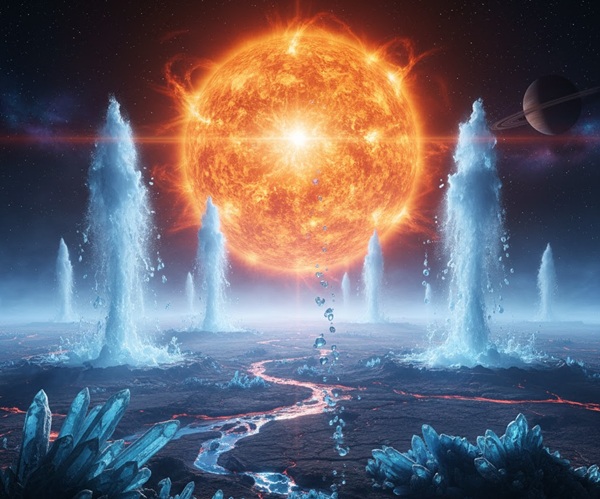Could Exoplanets Be Water Factories? New Research Turns Old Theories Upside Down
Scientists Discover How Water-Rich Exoplanets Make Their Own Water
The mystery of water where it shouldn’t exist
As astronomers uncover more and more exoplanets across the Milky Way, they sometimes stumble upon worlds that defy the rules of planetary science. Among them are a group of planets rich in water — even though they orbit far too close to their stars for liquid water to survive.
Now, a groundbreaking study published in Nature offers a striking new explanation: these planets might actually be manufacturing their own water. But how is that possible in such extreme conditions?
Sub-Neptune exoplanets: Worlds that challenge expectations
A special class of exoplanets known as sub-Neptunes—those between Earth and Neptune in size—have puzzled scientists for years. They generally possess a rocky core wrapped in an envelope of either hydrogen or water.
Traditionally, astronomers believed these planets formed beyond the snow line, the cold, distant region of a solar system where ice can condense. That would explain their watery makeup. But here’s the problem: many of these sub-Neptunes orbit dangerously close to their stars, where any water should long ago have evaporated.
If comets or asteroids had delivered the water, the amount still wouldn’t add up. The sheer volume of water detected on their surfaces is far too high for external delivery alone.
So where does all that water come from?
How exoplanets create their own oceans
The new study proposes a fascinating process — water forming internally through chemical reactions between a planet’s molten core and its hydrogen-rich atmosphere.
The researchers found that under extreme conditions, the intense pressures inside sub-Neptune planets — up to 10,000 times Earth’s atmospheric pressure — turn rock into magma. In this molten state, oxygen atoms break free from silicate minerals and combine with the surrounding hydrogen gas. The result: massive amounts of water.
The authors wrote, “We found that oxygen liberated from the silicate melt reacts with hydrogen, producing an appreciable amount of water up to a few tens of weight percent, which is much greater than previously predicted.”
In simpler terms, the rocky core itself becomes a water factory, forging oceans from its own minerals and atmosphere.
From hydrogen-rich worlds to water-rich worlds
This reaction doesn’t just explain the existence of water — it also helps link two previously separate types of planets: hydrogen-rich sub-Neptunes and water-rich super-Earths.
As the hydrogen in a planet’s atmosphere reacts to form water, the planet gradually transforms. Hydrogen-rich worlds evolve into water-rich ones, creating a natural continuum between planetary types.
“If an excess, unreacted hydrogen atmosphere can be retained,” the authors note, “sub-Neptunes with an H₂-rich atmosphere covering an H₂O-rich layer above the core—so-called hycean worlds—may be quite common.”
Could this mean that water worlds are not rare, but the natural outcome of planetary evolution?
Rethinking how and where water worlds form
This discovery upends one of astronomy’s long-standing assumptions: that water-rich planets must form far from their stars. If worlds can create water internally, then habitable, water-bearing planets could exist much closer to their stars than previously thought.
That expands the possible number of planets that might host water — and potentially life.
Future experiments will test this idea under a wider range of planetary materials and pressures. Observational missions, too, could soon refine how scientists interpret exoplanet atmospheres, improving how we detect water and other key molecules from afar.
A new perspective on planetary life and formation
The implications of this discovery are profound. If rocky planets can synthesize their own water, life-sustaining environments might exist in unexpected corners of the galaxy — even on worlds once thought too hot or too barren.
So perhaps the real question is not whether water exists elsewhere in the cosmos, but how many different ways the universe finds to make it.
Source: Could Exoplanets Be Water Factories? New Research Turns Old Theories Upside Down
From Carl Sagan’s Dreams to Reality: Is Cloud-Based Life the Next Big Discovery?
From Carl Sagan’s Dreams to Reality: Is Cloud-Based Life the Next Big Discovery?

